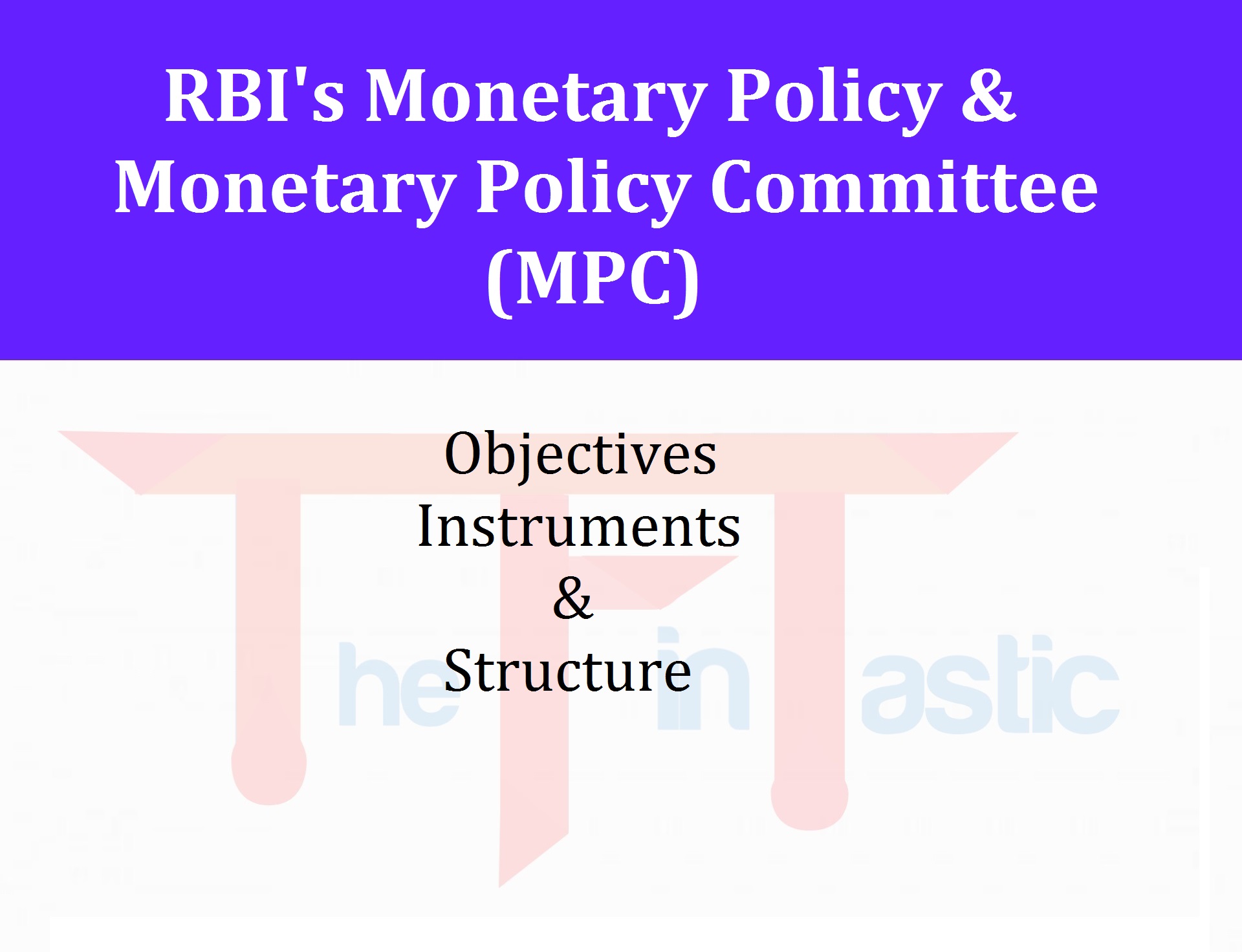What is Monetary Policy?
Monetary policy is the policy of the Reserve Bank of India for the utilization of financial instruments under its control to achieve the objectives of GDP growth and lower inflation rate. The RBI is approved to a made monetary policy under the Reserve Bank of India Act, 1934.
Thus monetary policy alludes to the credit-control estimates received by the Central Bank of a country.
Goals of the Monetary Policy
The Chakravarty committee has mentioned that price stability, economic growth, equity, social justice, advancing and supporting the new monetary and monetary institutions have been significant targets of the monetary policy in India.
RBI attempts consistently attempts to lessen the rate of inflation or keep it inside a sustainable breaking point while then again administration of India centers to accelerate the GDP growth of the country.
What is Monetary Policy Committee?
The Monetary Policy Committee (MPC) is formed by the Central Government under Section 45ZB. The MPC decides the policy financing cost needed to accomplish the inflation target.
RBI's Monetary Policy Department (MPD) helps the Monetary Policy Committee (MPC) in framing the monetary policy. The Monetary Policy Committee decides the policy rates needed to accomplish the inflation target.
The Monetary Policy Committee is answerable for fixing the benchmark loan fee in India. The meetings of the Monetary Policy Committee are held at any rate 4 times each year (explicitly, at any rate once every quarter) and it distributes its choices after each such meeting.
The committee involves six members - three officials of the Reserve Bank of India and three external members named by the Government of India. They need to observe a "silent period" seven days when the rate choice for "most extreme privacy". The Governor of RBI is the chairperson ex officio of the committee.
Decisions are taken by the majority with the Governor having the casting vote in case of a tie. The current command of the committee is to keep up 4% annual inflation until 31 March 2021 with an upper resilience of 6% and a lower resistance of 2%.
The Reserve Bank of India Act, 1934 was amended by Finance Act (India), 2016 to establish MPC which will acquire more transparency and accountability fixing India's Monetary Policy. The monetary policy is distributed after each meeting with every member explaining his assessments. The committee is liable to the Government of India if the inflation exceeds the reach recommended for three continuous quarters.
Structure of Monetary Policy Committee
The 6 members of the Monetary Policy Committee (MPC) are appointed by the Central Government according to Section 45ZB of the amended RBI Act, 1934. The primary meeting of the Monetary Policy Committee (MPC) was hung on in Mumbai on October 3, 2016.
Instruments of Monetary Policy
The instruments of monetary policy are of two kinds:
- Quantitative Instruments: General/indirect (like Cash Reserve Ratio, Statutory Liquidity Ratio, Open Market Operations, Bank Rate, Repo Rate, Reverse Repo Rate, Marginal standing facility, and Liquidity Adjustment Facility)
- Qualitative Instruments: Selective/direct (changing the margin money, direct action, and moral suasion)
It is worth referring that the entirety of the previously mentioned instruments of the monetary policy is overseen according to the necessity of the economy. These instruments keep up the progression of money supply in the economy with the goal that the rate of inflation can be stabilized for guaranteeing the growth of the Economy.



No comments:
We welcome encouraging, respectful and relevant comments. Thank You!!